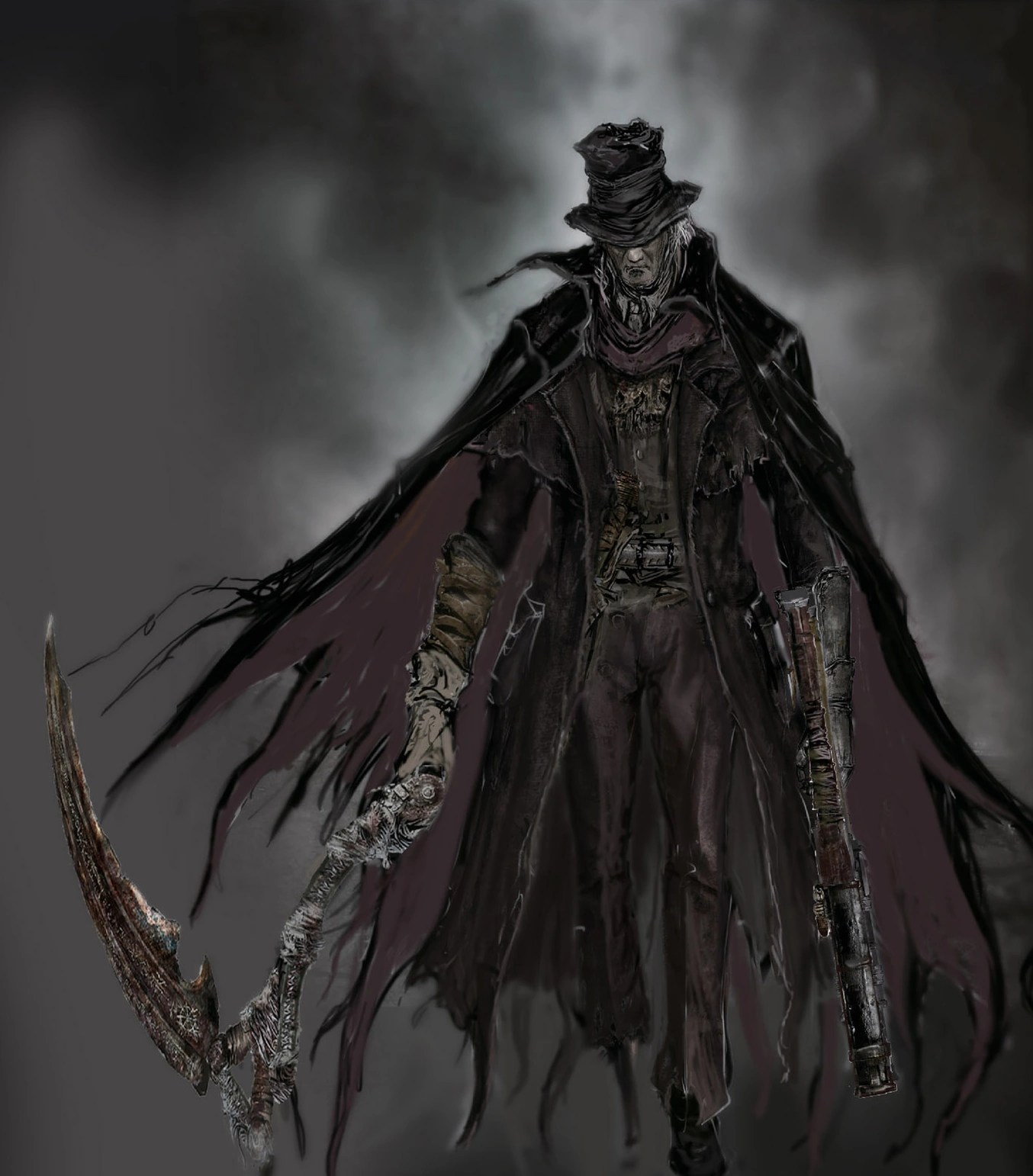Exploring The Artistic Depths Of Bloodborne: A Journey Through Its Visual Mastery
Bloodborne art is not merely a visual aspect of the game but a profound expression of its themes, atmosphere, and storytelling. From its haunting landscapes to the intricate character designs, the artistry of Bloodborne captivates players and critics alike. As we delve into the world of Bloodborne, we will uncover the layers of artistry that contribute to its status as a modern classic in the gaming industry.
The aesthetic choices made by the creators of Bloodborne play a crucial role in delivering an immersive experience. By intertwining Gothic architecture, Lovecraftian horror, and a steampunk influence, the game constructs a universe that feels both familiar and unsettling. This article will explore the various elements of Bloodborne art, including character design, environmental aesthetics, and the impact of color and lighting.
As we navigate through this artistic journey, we will not only appreciate the visuals but also understand how they serve the narrative and gameplay. Bloodborne's art is a testament to the power of visual storytelling in video games, and this exploration will highlight its significance and influence on the genre.
Table of Contents
- Biography of Bloodborne's Art Director
- The Visual Style of Bloodborne
- Character Design: A Deep Dive
- Environmental Art and World-Building
- The Impact of Color Theory in Bloodborne
- Lighting Techniques: Creating Atmosphere
- Influence of Bloodborne Art on Other Games
- Conclusion: The Legacy of Bloodborne Art
Biography of Bloodborne's Art Director
Bloodborne was directed by Hidetaka Miyazaki, a visionary in the gaming industry known for his distinctive approach to game design and art direction. Under his leadership, Bloodborne has become a hallmark of artistic excellence in games.
| Name | Hidetaka Miyazaki |
|---|---|
| Date of Birth | 1974 |
| Nationality | Japanese |
| Notable Works | Dark Souls, Bloodborne, Sekiro: Shadows Die Twice |
The Visual Style of Bloodborne
The visual style of Bloodborne is heavily influenced by Gothic horror, featuring dark, intricate environments that evoke a sense of dread and unease. The game’s architecture, from the towering cathedrals to the labyrinthine streets of Yharnam, reflects a meticulous design philosophy that immerses players in its haunting world.
Key Characteristics of Bloodborne's Visual Style
- Gothic architecture and design
- Dark, muted color palettes
- Intricate character and enemy designs
- Use of atmospheric effects to enhance immersion
Character Design: A Deep Dive
Character design in Bloodborne is not just about aesthetics; it also serves to enhance the narrative and gameplay. Each character, from hunters to grotesque beasts, is meticulously crafted to reflect the themes of the game.
Hunter Design
The design of the hunters is particularly striking, showcasing a blend of Victorian fashion and battle-ready attire. The iconic hunter's garb is not only visually appealing but also functional, offering players a sense of identity as they navigate through the perilous world.
Enemy Design
Enemies in Bloodborne exhibit a grotesque beauty, emphasizing the horror elements of the game. Each enemy is designed to evoke fear and challenge players, contributing to the overall tension that defines the gameplay experience.
Environmental Art and World-Building
The environmental art in Bloodborne is a crucial aspect of its storytelling. The interconnected world of Yharnam is brought to life through detailed textures, atmospheric effects, and a cohesive art direction that enhances the narrative.
Design Elements of Yharnam
- Crumbling architecture that reflects the city’s decline
- Dynamic weather and lighting that shift the mood
- Hidden pathways and secrets that encourage exploration
The Impact of Color Theory in Bloodborne
Color theory plays a significant role in Bloodborne's art. The use of color conveys emotions and enhances the game's ambiance, guiding players' experiences and expectations as they traverse the world.
Color Palettes and Their Meanings
Bloodborne employs a limited color palette, dominated by dark hues and occasional splashes of color that symbolize danger or significance.
Lighting Techniques: Creating Atmosphere
Lighting is another critical element of Bloodborne’s artistic design. The interplay of light and shadow creates a foreboding atmosphere, heightening the sense of fear and urgency throughout the game.
Techniques Used in Bloodborne
- Dynamic lighting that reacts to player actions
- Use of shadows to obscure threats
- Strategic placement of light sources to guide players
Influence of Bloodborne Art on Other Games
Since its release, Bloodborne's art style has influenced numerous other games, inspiring developers to adopt similar aesthetics and design philosophies.
Notable Games Inspired by Bloodborne
- Dark Souls III
- Remnant: From the Ashes
- Ghost of Tsushima
Conclusion: The Legacy of Bloodborne Art
In conclusion, the artistry of Bloodborne is a testament to the power of visual storytelling in video games. Its intricate designs, atmospheric environments, and compelling character art work together to create an unforgettable experience that resonates with players. As we reflect on Bloodborne's artistic achievements, it is clear that its influence will continue to shape the future of game design.
We invite you to share your thoughts on Bloodborne's art in the comments below. If you enjoyed this exploration, consider sharing it with fellow gamers or checking out more articles on our site!
Thank you for joining us on this journey through the artistic depths of Bloodborne. We hope to see you again soon for more insights and discussions on the world of gaming.
DLC Trailer: Everything You Need To Know
Understanding The Impact Of Vegeta's Death In Dragon Ball
X-45 Helldivers: The Ultimate Guide To Victory In Galactic Warfare


